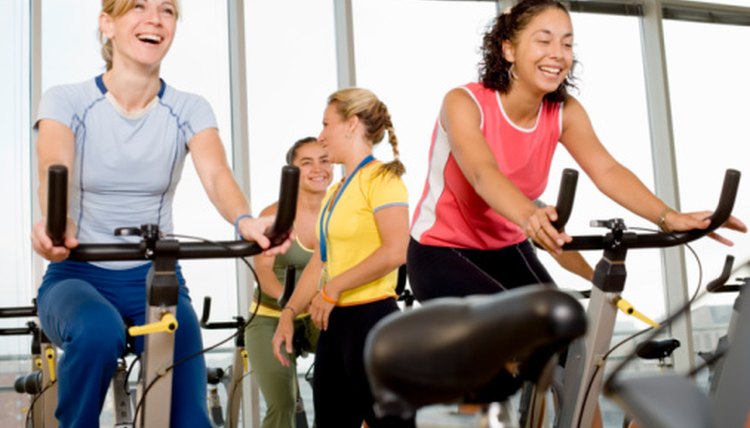What does fact checked mean?
At SportsRec, we strive to deliver objective content that is accurate and up-to-date. Our team periodically reviews articles in order to ensure content quality. The sources cited below consist of evidence from peer-reviewed journals, prominent medical organizations, academic associations, and government data.
The information contained on this site is for informational purposes only, and should not be used as a substitute for the advice of a professional health care provider. Please check with the appropriate physician regarding health questions and concerns. Although we strive to deliver accurate and up-to-date information, no guarantee to that effect is made.
Exercise Bikes & Hip Bursitis

When it comes to exercise, more is better -- the 2008 Physical Activity Guidelines report that higher intensity, more frequency and longer duration of your exercise program all result in significant additional benefits to your health. But at some point, the additional time you spend on the exercise bike can cause overuse injuries. Check with your doctor to pinpoint the cause of your hip pain before you embark on ways to continue cycling while reducing injuries.
Hip Bursitis
There are many fluid-filled sacs, or bursae, around your hip joint to allow the bones, tendons and muscles to move freely. Repetitive motion, such as daily cycling for extended periods, is the most common cause of bursitis according to the Mayo Clinic. With the constant friction caused by the cycling motion, the bursae become inflamed and cause pain when you press on the area or move in certain ways.
Bike Overuse
Cycling for 60 minutes, five days or more a week, is unnatural. Your body was not meant to withstand so much stress from the constant motion in your hip. Vary your exercise and your timing to spread the stress to other parts of your body instead of letting your hips take the entire load. Alternate days of cycling with days of walking, running or stair climbing. Alternatively, limit your cycling to 20 minutes and spend 20 minutes on the elliptical machine and 20 minutes on the treadmill.
Cycling Mistakes
The American Council on Exercise notes that cycling too fast poses a danger to your hips as well as your knees and ankles. Try adding resistance instead of revolutions to get your heart rate up. Avoid unusual maneuvers in your cycling classes that put additional stress on your hip joints, such as freezing your upper body while standing or pedaling with one leg only.
Bursitis Treatment
Preventive or remedial measures include: rest, ice, an anti-inflammation diet, over the counter anti-inflammatories. A physical therapist may suggest stretching the hip muscles after exercising and advise exercises to strengthen the muscles around the hip, such as bridges, step-ups with dumbbells, squats and lunges.
References
Writer Bio
Susan Lundman began writing about her passions of cooking, gardening, entertaining and recreation after working for a nonprofit agency, writing grants and researching child development issues. She has written professionally for six years since then. Lundman received her M.A. from Stanford University.
